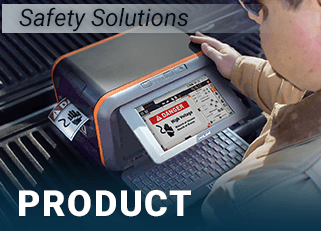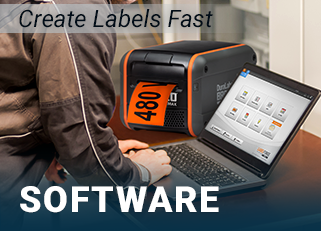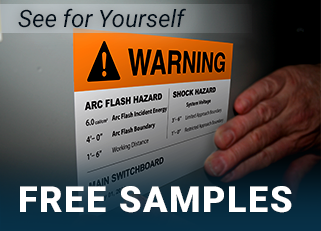Occupational Exposure
03
February,
2023
5 MINUTE READ

The term "occupational exposure" refers to a potentially harmful exposure to hazards chemicals in the workplace. These may be toxic substances, biological hazards, or environmental hazards such as high noise levels. Two good examples of workplaces where there is a risk occupational exposure to hazardous materials are laboratories and medical facilities. We'll use these to show how workers can be protected from occupational exposure to toxic and biological hazards.
Occupational Exposure ? Laboratories
Hazardous chemicals in laboratories include irritants, sensitizers, carcinogens, toxins, corrosives, hepatotoxins, nephrotoxins, and neurotoxins. There are substances that will harm the skin, eyes, lungs, mucous membranes, and hematopoietic systems. How are workers protected against occupational exposure to this wide range of hazards?
Occupational Exposure ? OSHA Permissible Exposure Limits (PEL)
OSHA has established mandatory Permissible Exposure Limits (PELs) for over 500 substances. Employees must be protected from occupation exposures that exceed these limits. However, OSHA recognizes that their exposure standards are out-of-date and do not provide adequate protection. This has happened because the legal hurdles for updating OSHA PELs are significant.
OSHA will continue to enforce the mandatory PELs, however, for employees to be safe, occupational exposures should be kept below the limits established by organizations such as NIOSH and ACGIH. To help employers protect their workers from harmful occupational exposures to chemicals, OSHA has created two resources:
OSHA Toolkit Helps Employers Identify Safer, Substitute Chemicals
OSHA has created an online toolkit that helps employers replace hazardous chemical with safer chemicals. The toolkit uses a step-by-step approach to walk employers through the information, methods, and tools they need to make an informed chemical substitution decision. This OSHA toolkit is available at: www.osha.gov.
OSHA Annotated Permissible Exposure Limits Tables
While not legally enforceable, other organizations have developed occupational exposure limits that are more realistic. OSHA has created a set of tables that help employers voluntarily adopt the newer, more protective workplace exposure limits. The tables provide a side-by-side comparison of the following:
- OSHA PELs for general industry
- California Division of Occupational Safety and Health PELs
- National Institute for Occupational Safety and Health (NIOSH) recommended exposure limits
- American Conference of Governmental Industrial Hygienist (ACGIH) threshold limit values
The tables are available online at: www.osha.gov.
Occupational Exposure ? Monitoring Exposures
If there are any indications that an occupational exposure to harmful substances might be above the action level, employers must periodically measure worker exposures. The exposure action level is the threshold that triggers increased monitoring measures such as air monitoring and medical examinations.
Monitoring must continue until employee exposures are consistently below the action level.
Occupational Exposure ? Is A Chemical Hygiene Plan Required?
Yes. If your workplace has hazardous chemicals, there must be a written chemical hygiene plan. The plan must include the following:
- Appropriate hazardous chemical safety and health procedures
- Hazardous chemical hygiene practices
- Criteria for reducing exposure to hazardous chemicals
- Criteria for use of personal protective equipment (PPE)
- Procedures that ensure protective equipment, such as fume hoods, are functioning properly
- Identification of when employer approval is required for an operation, procedures, or activity that involves hazardous material
- A description of the required employee training (see below)
- Descriptions of when medical consultation is required
- Identification of the measures to be taken to protect employees from particularly hazardous substances
- Assignment of a Chemical Hygiene Officer
Occupational Exposure - Worker Training
Workers must be provided with training that provides information about the chemical hazards in their workplace. They must be trained before starting to work in an area where hazardous chemicals are present, and prior to any work that may result in a potential exposure to hazardous materials.
Employers must inform employees about:
- The contents of the OSHA occupational exposure standard
- Where they can read the chemical hygiene plan
- The OSHA PELs for any hazardous substances they may be exposed to
- Symptoms and signs of exposures to the hazardous chemicals being used
- The location of Safety Data Sheets
- The location of other reference material about the chemical hazards, and the safe handling, storage, and disposal of hazardous materials
Employees must be trained in the following:
- Methods for detecting the presence of a hazardous chemical
- The physical and health hazards of chemicals in their work area
- Protective measures that must be taken
- Specific procedures used to when working near or with hazardous substances in general
- Work practices used when working with specific hazardous materials
- Emergency procedures related to hazardous materials
- The use and care of personal protective equipment (PPE)
- The employer's written chemical hygiene plan
Occupational Exposure ? Biological Hazards In Health Care
Biological hazards are living organisms, or products of living organisms, that have the ability to cause illness, disease, or death in humans. They include pathogenic micro-organisms and viruses such as HIV, Hepatitis, avian flu, and Rocky Mountain spotted fever. They include toxins, spores, fungi, parasitic worms, and bio-active substances. Biological hazards also include the transmitters of disease, also known as " biological vectors." Examples of these include mosquitoes, ticks, and agricultural animals.
In the general public the most common route for biological agents to enter the body is when inhaled. Other potential routes include being ingested (eaten), absorbed, or through cuts of punctures of the skin. Once inside the body they can quickly multiply and be passed to other people.
Common ways for biological agents to be directly transmitted include:
- Physical contact between an infected person or animal, and a non-infected person
- When droplets are projected into the mucous membranes of the nose, eyes or mouth, as a result of another person's cough or sneeze
- When the skin is accidentally cut or punctured by an infected object (sharps), such as a needle
Other infectious agents are transmitted indirectly:
- In water or attached to food, or cooking and eating utensils
- By insect bites
- Through the air, and then inhaled
Occupational Exposure - What Body Fluids Are Potentially Infectious?
Contact with body fluids is a common way for biological agents to infect someone in the workplace. All body fluids, including blood, secretions (except sweat), and excretions have the potential to contain infectious agents.
Blood has the greatest potential for transmitting an infection. Even if blood is not visible, saliva and other secretions may contain small quantities of blood and may transmit an infection. Preventing occupational exposures to blood, and other body fluids, is the primary way of preventing transmission of an infection in the workplace.
In general, when there is a potential for biological hazards, employers must have an occupational exposure control plan that describes the employee protection measures that are being used. The plan must:
- Describe engineering and administrative controls
- Ensure the use of personal protective clothing and equipment
- Describe the training that will be provided
- Describe the medical surveillance plan
- Ensure the use of hepatitis B vaccinations
- Ensure that appropriate signs and labels are used
The occupational exposure control plan will identify methods used to reduce the potential for exposure to blood borne pathogens following the same hierarchy as for other hazards: engineering controls, administrative controls, and personal protective equipment (PPE).
- Engineering controls eliminate the hazard. This is always the best option. If the potential for an occupational hazard has been eliminated, then it cannot happen. Common examples of engineering controls for biological hazards include:
- Sharps disposal containers. Once the sharps are in the container they cannot harm anyone
- Self-sheathing needles that have a protective sheath over the needle
- Needleless systems for delivering intravenous fluids and medication
- Administrative controls include the general workplace safety rules, as well as work practices that reduce the risk of blood exposure. An example would be using the "scoop" technique to recap an anesthetic needle. Administrative controls include requirements for hand washing. They also include restricting access to certain areas, which reduces the number of people who might be exposed to a hazard.
- Personal protective equipment is the last line of defense against an occupational exposure. PPE involves specialized clothing or equipment such as gowns, masks, face shields or protective eye wear, and gloves.
Occupational Exposure ? Signs and Labels
Signs and labels serve a crucial role in preventing occupational exposure to hazardous materials. For example, OSHA's Hazard Communication Standard requires that hazardous chemical containers have GHS labels that use a standardized system to identify the chemical, the hazards, and protective measures. Containers, including bags, holding hazardous biological material must also be labeled using OSHA specified labels that include the bio-hazard symbol. In the section of the OSHA technical manual that guides OSHA inspections of hospitals, the second item on the inspector's list of what to look for is "adequate marking of hazards and chemical labeling."
Yes, labels and signs are important. And those labels and signs must not be peeling off, faded, or damaged in any way that prevents them from delivering their message. That's why having a DuraLabel printer on-site is important. DuraLabel custom label printers and tough-tested supplies get the job done right. That's why DuraLabel is the only brand that provides a five year warranty on your labels after they've been applied. Find out more about DuraLabel, and get free sample labels, by calling 888.326.9244 today. Want to get started right away? Download this easy-to-use, free guide on creating OSHA signs.
RELATED RESOURCES

HazCom Training
OSHA's HazCom rules, sometimes called the Hazard Communication Standard or HazCom 2012, cover requirements ...
Read
Warehouse Safety Hazards
How to Safely Avoid Warehouse Hazards Warehouses are statistically one of the most hazardous places to work. ...
ReadCommon Questions about Chemical Laboratory Safety
More than 500,000 U.S. workers are exposed to all kinds of chemicals while working in laboratories. From ...
Read.png)


